Pacita Abad’s Retrospective at the AGO: Color is Resistance
Pacita Abad’s Retrospective at the AGO: Color is Resistance
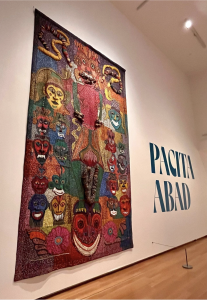
Marcos and His Cronies took Pacita Abad 10 years to finish
By Nova Rellosa-De Leon
Seeing Pacita Abad take center stage at the Art Gallery of Ontario would fill any Filipino in the diaspora with a profound sense of joy and validation. It is an overdue recognition not only of her creative genius, but of the rich cultural heritage that Filipinos can offer the world. For so long, she has been largely overlooked as an artist and her unconventional use of textile, bright colors and embellishments were often dismissed as too feminine, too loud, too wild. They were considered craft, not fine art. Twenty years after her death, Pacita’s time has finally come. And her first retrospective exhibition has arrived in Toronto.
As one enters the gallery, the sheer magnitude of Pacita’s works immediately captivates the viewer. “Marcos and His Cronies,” a 150-square foot trapunto, towers over the entrance. It depicts Ferdinand Marcos as a child-eating demon standing on the head of a bedazzled Imelda, surrounded by smaller demons (yes, she named these cronies, all 18 of them!). On the opposite wall hangs a massive quilt of textiles collected in her travels around the country. Entitled “One Hundred Years of Freedom: From Batanes to Jolo,” Pacita created the triangular pennants in 1998 to celebrate the centennial of Philippine independence.
What is also striking is that many pieces are accompanied by Tagalog labels. It brings a poignant sense of pride to have Pacita’s roots acknowledged in this manner and to see our language in a mainstream space such as the AGO.
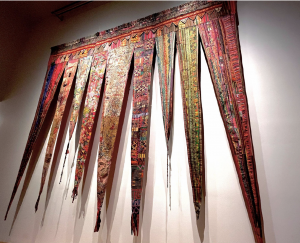
100 Years of Freedom: From Batanes to Jolo is a patchwork of fabric scraps from communities around the Philippines
The exhibit mirrors her journey across continents, and how her interactions with different cultures have influenced her works. Living in the U.S. as a person of color, she closely identified with immigrants and refugees, and highlighted the struggles of the marginalized, the oppressed and the persecuted through her paintings. LA Liberty recreates the Statue of Liberty as a brown woman to celebrate immigrants of color. Korean Shopkeepers shows a day in the life of racial minorities. Flight to Freedom depicts Cambodians seeking refuge by the Thailand border. She traveled through 60 countries collecting stories, materials and techniques, then masterfully stitched them together to create her art. Her use of African textiles, Philippine shells, indigenous Guatemalan weavings, images of Cambodian refugees, Indonesian patterns, beads from the Middle East and tales from Korean immigrants, was her way of expressing solidarity with other cultures. It was a testament to her belief that art is global.
Pacita existed at the intersection of race, gender, and class in a world that favors white, male, and Western artists. She intentionally filled her canvas with bold hues and varied textures to not only reflect Filipino culture, but more so, defy the American standards of subdued colors and subtle lines. Twenty years after her death, Pacita Abad has redefined
art and left a legacy for artists of color to celebrate their identities and continue to challenge norms.
Pacita Abad’s exhibition is on at the Art Gallery of Ontario until January 19, 2025.
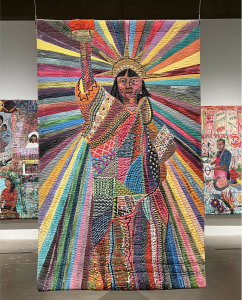
L.A. Liberty; painted cloth on stitched and padded canvas
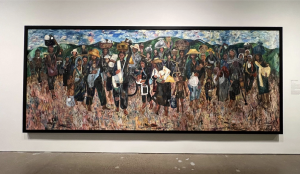
Flight to Freedom; acrylic, oil on canvas

Korean Shopkeepers
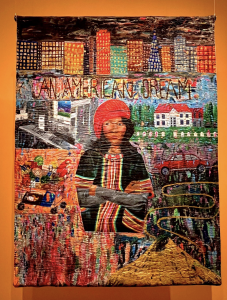
If My Friends Could See Me Now; painted cloth on stitched and padded canvas
Comments (0)